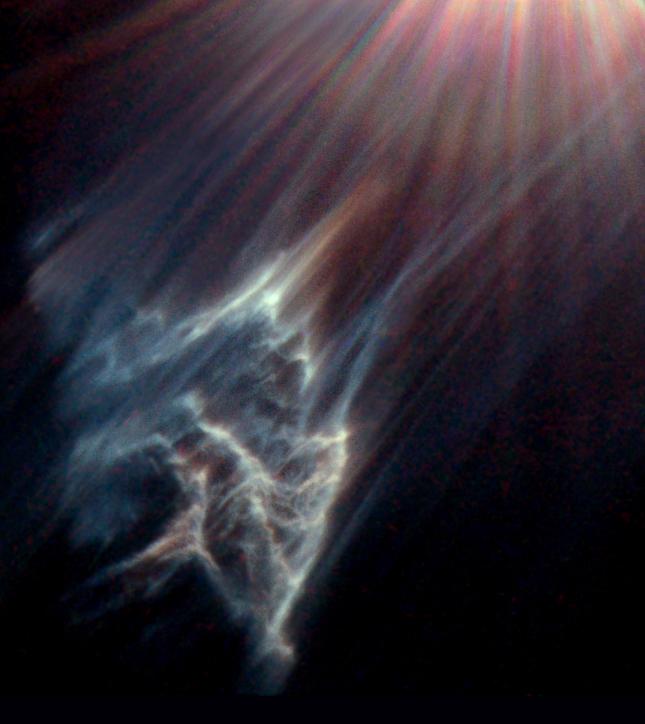
Barnard’s Merope Nebula
NASA's Hubble Space Telescope caught the eerie, wispy tendrils of a dark interstellar cloud being destroyed by the passage of one of the brightest stars in the Pleiades star cluster. Like a flashlight beam shining off the wall of a cave, the star is reflecting light off the surface of pitch-black clouds of cold gas laced with dust. These are called reflection nebulae. The famous cluster is easily visible in the evening sky during the winter months as a small grouping of bright blue stars, named after the "Seven Sisters" of Greek mythology. Resembling a small dipper, this star cluster lies in the constellation Taurus at a distance of about 380 light-years from Earth. The unaided eye can discern about half a dozen bright stars in the cluster, but a small telescope will reveal that the Pleiades contains many hundreds of fainter stars. In many cases, the nebulae surrounding star clusters represent material from which the stars have formed recently. However the Pleiades nebulosity is actually an independent cloud, drifting through the cluster at a relative speed of about 6.8 miles per second (11 kilometers per second). In 1890, American astronomer E. E. Barnard, observing visually with the Lick Observatory 36-inch telescope in California, discovered an exceptionally bright nebulosity adjacent to the bright Pleiades star Merope. It is now cataloged as IC 349, or "Barnard's Merope Nebula." IC 349 is so bright because it lies extremely close to Merope — only about 3,500 times the separation of Earth from the Sun, or about 0.06 light-year — and thus is strongly illuminated by the star's light. In this Hubble image, Merope itself is just outside the frame to the upper right. The colorful rays of light at the upper right, pointing back to the star, are an optical phenomenon produced within the telescope, and are not real. However, the remarkable parallel wisps extending from lower left to upper right are real features, revealed for the first time through Hubble's high-resolution imaging capability. Astronomers obtained these broadband observations with Hubble's Wide Field and Planetary Camera 2 on September 19, 1999. Astronomers propose that, as the Merope Nebula approaches Merope, the strong starlight shining on the dust decelerates the dust particles. Physicists call this phenomenon "radiation pressure." Smaller dust particles are slowed down more by the radiation pressure than the larger particles. Thus, as the cloud approaches the star, there is a sifting of particles by size, much like grain thrown in the air to separate wheat from chaff. The nearly straight lines pointing toward Merope are thus streams of larger particles, continuing on toward the star while the smaller decelerated particles are left behind at the lower left of the picture. Over the next few thousand years, the nebula (if it survives the close passage without being completely destroyed) will move on past Merope, somewhat like a comet swinging past our Sun. This chance collision allows astronomers to study interstellar material under very rare conditions, and thus learn more about the structure of the dust lying between the stars. For more information please visit: hubblesite.org/image/1009/news_release/2000-36
